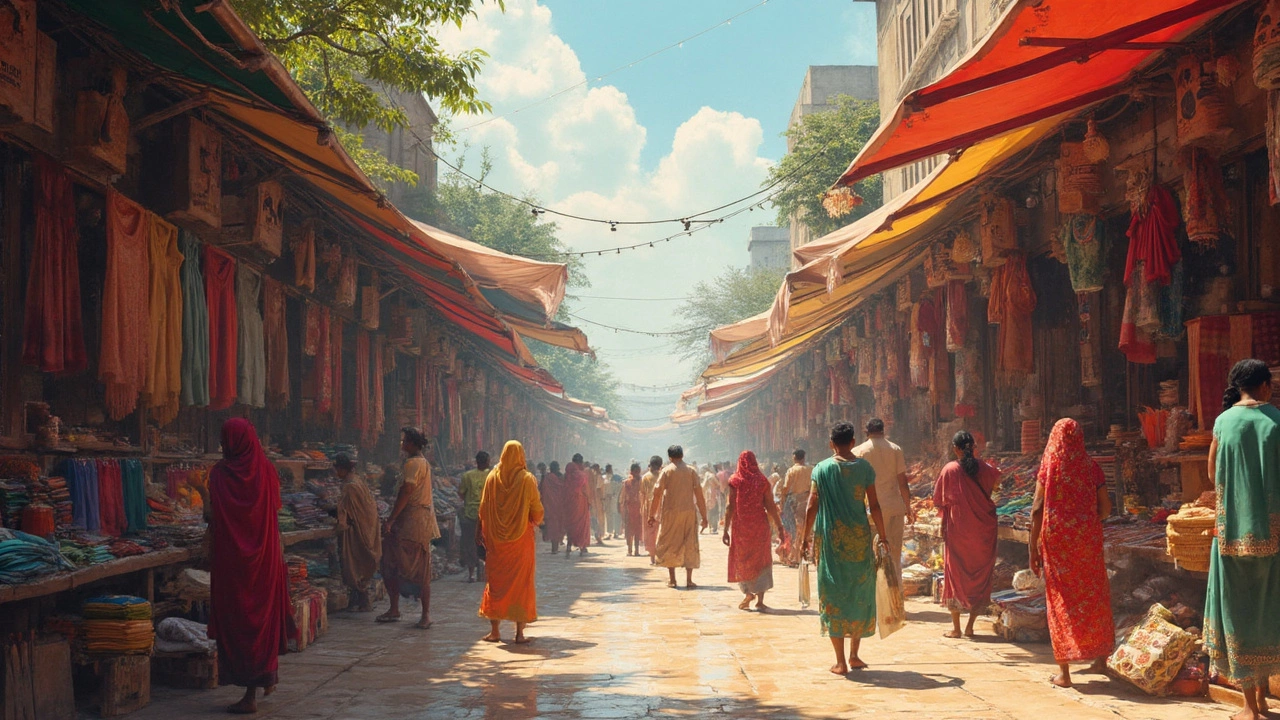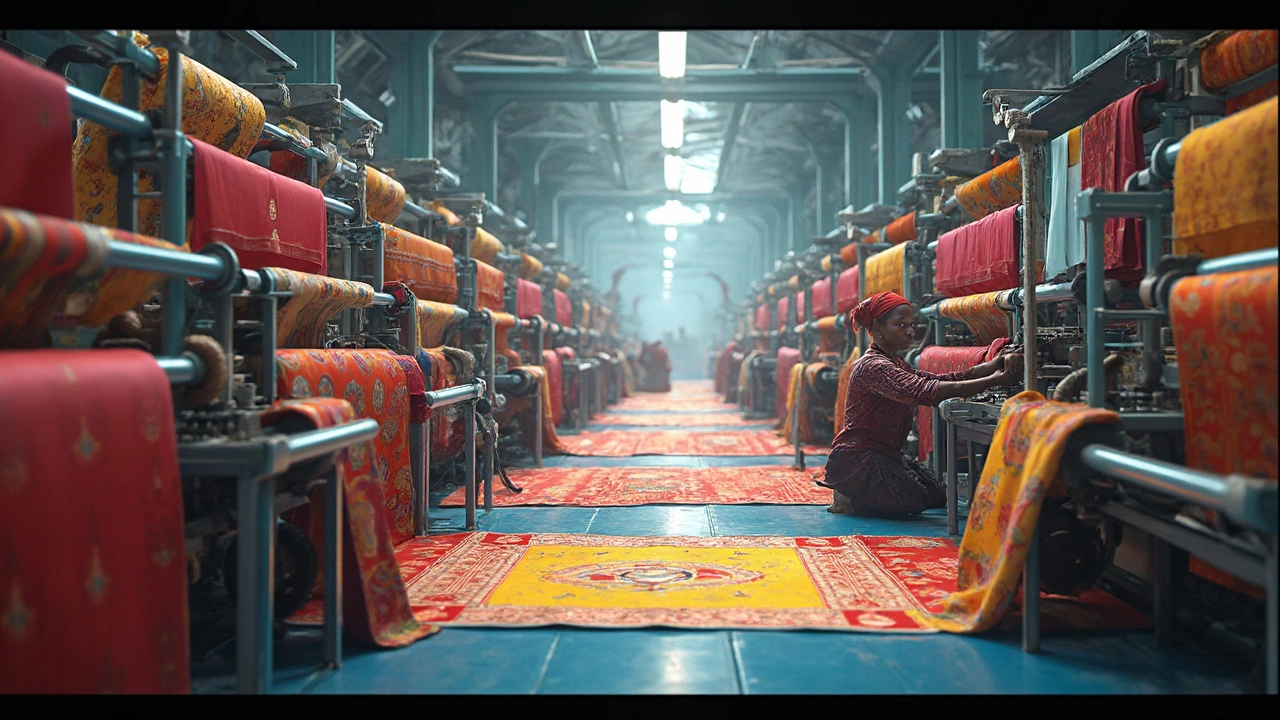What's happening in the textile world of India as we step into 2024? Well, it's a mix of exciting innovations and some challenges, making it a pivotal year for manufacturers. Let's break it down.
First off, the textile sector, one of India’s oldest industries, is an enormous part of the economy, employing millions. It's not just about producing fabric; it's a critical cog in both export and domestic consumption. With global markets shifting, Indian manufacturers are keen to adapt and stay competitive.
Technological innovation is the game-changer here. Smart textiles, AI-driven production processes, and advanced machinery are no longer just buzzwords. These are emerging trends that are actually being implemented, aiming to improve efficiency and reduce costs. For instance, factories embracing automation are seeing significant boosts in productivity.
Sustainability is another big focus. With consumers becoming more eco-conscious, companies are under pressure to adopt greener practices. Whether it's using organic materials or water-saving techniques, manufacturers are making strides. And let’s be honest, green is not just good for the planet – it’s appealing to customers who are willing to pay a premium for environmentally friendly fabrics.
Current Market Dynamics
Okay, let's talk about what's buzzing in the world of textiles in India right now. The textile industry here continues to be a powerhouse, but it’s facing a mix of tailwinds and headwinds as we head into 2024.
First, the good stuff. Demand in the domestic market is strong and growing. With a population that's no joke, this creates a massive consumer base right at home. The rising middle class is pushing for more variety and quality in clothing, your everyday attire as well as those fancy ethnic pieces.
Exports are still a big part of the puzzle, making up a significant chunk of business for many manufacturers. But this is where things get a little bumpy. Global economic shifts, especially in traditional Western markets, are playing a bit of havoc. It's not all doom and gloom, though. There’s a growing interest in Indian textiles in places like Southeast Asia and Africa, where our vibrant prints and traditional craftsmanship are getting much love.
Challenges Facing the Market
Let's not sugarcoat it; there are challenges. Fluctuations in raw material prices, particularly for cotton, can throw a wrench in planning. And there's the ever-present competition from other big players like China and Bangladesh.
Also, logistics is a bit of a sore point. Infrastructure improvements have helped, but the road to seamless distribution is not completely smooth yet.
Opportunities for Growth
Despite challenges, there are genuine opportunities. The Indian government is pushing some cool initiatives to boost manufacturing, like the Production-Linked Incentive (PLI) scheme, which is driving investments into capacity expansion and modernization. These efforts are more than just talk, they're playing a real role in reshaping the landscape.
Getting on board with digital platforms is another promising area. Many businesses are expanding their online presence, reaching consumers who prefer the convenience of browsing collections from their phones.
Technological Innovations
Stepping into 2024, the textile industry in India is cruising into new territories with technological advancements. These are not just optional upgrades; they are turning into necessities for survival and growth in a fiercely competitive market.
Smart Textiles
What's the buzz around smart textiles? Imagine fabric that can change color with temperature shifts or even monitor your heart rate. This is not future tech; it's happening now. Indian manufacturers are integrating smart textiles into their product lines, seeing potential not only in fashion but also in healthcare and sportswear.
Automation and AI
Automation is making its mark too. Factories are adopting AI-driven machinery to streamline production. This is all about making the process faster and more efficient while cutting down on errors. A great example is the integration of AI in predictive maintenance, allowing machines to alert operators before a breakdown.
3D Printing
The integration of 3D printing is another major leap. Think of it as 'printing' a garment right from digital files. While still in its infancy in India, some forward-thinking companies are using 3D printing to produce prototypes and unique, customizable clothing at a fraction of the cost.
Data Analytics
Data analytics may sound like a buzzword, but it's helping manufacturers to forecast trends by analyzing consumer preferences. This means less wastage of resources and better alignment with market demand, making it one of the coolest uses of tech in textiles.
| Technology | Adoption Rate in 2024 (%) |
|---|---|
| AI and Automation | 60% |
| Smart Textiles | 40% |
| 3D Printing | 25% |
The India textile outlook sees these innovations not just as cost-cutting measures but as ways to produce better quality fabrics that meet the changing demands. Embracing these technologies allows manufacturers to stay relevant and thrive amidst international competition.

Sustainability Practices
With climate change constantly making headlines, sustainability has become more than just a buzzword in the textile industry. In 2024, it’s at the core of business strategies, with India textile outlook heavily focusing on green practices.
Organic Materials
Using organic raw materials is a big step many manufacturers are taking. Organic cotton and bamboo fibers are gaining popularity not just because they reduce environmental impact, but because they cater to a new wave of conscious consumers.
Water Conservation
Water scarcity is a real issue, and the industry is finding ways to address it. From closed-loop water systems to innovative dyeing processes that use less water, these practices help cut down on water usage significantly.
"Sustainability isn't only about the future—it's about thriving in the market today," said Anil Sharma, CEO of Sustainability & Innovation at a leading textile firm.
Eco-Friendly Manufacturing
Being eco-friendly isn’t just about raw materials. It involves the entire production process. Factories now utilize energy-efficient machines and recycle waste materials to lower their carbon footprint.
- Switching to renewable energy sources.
- Implementation of eco-friendly chemicals during production.
- Improved waste management practices.
Why It Matters
Why should companies care? Besides doing good for the planet, sustainable practices actually make financial sense. They lower operating costs and open new markets for textile manufacturers.
Market Response
The market is responding positively to these changes. A survey by Fabric Times in 2023 highlighted that 70% of consumers are more likely to buy from brands that demonstrate a commitment to sustainability.
These efforts aren't just for show—they're crucial for long-term success. As more brands jump on board, the textile trends 2024 indicate there's no turning back now—sustainability is here to stay.
Government Initiatives
India's government is pulling out all the stops to boost the textile industry. It's not just about increasing production but making processes smoother and more modern. They're throwing their weight behind several schemes aimed at revamping the sector and giving it a competitive edge globally.
Production Linked Incentive (PLI) Scheme
This initiative is a biggie. The PLI Scheme is all about rewarding companies for boosting production. How? By offering financial incentives. It focuses on technical textiles and man-made fibers, two areas expected to see growth. The idea is to encourage manufacturers to up their game and scale up capacities.
Integrated Textile Parks
Another cool initiative is the development of integrated textile parks. Imagine having everything you need to produce textiles in a single spot – from raw materials to manufacturing units. This setup reduces costs and helps with faster production times. Plus, the government provides funding to set these up, making it a win-win for investors and manufacturers.
Encouraging Exports
On the export front, the government is working hard to find new markets. They're negotiating trade deals with various countries, making it easier for Indian textiles to flow beyond borders. Lower tariffs and fewer restrictions mean more business for Indian manufacturers.
Focus on Sustainability
The buzzword, sustainability, isn't being ignored. The government is encouraging manufacturers to adopt eco-friendly practices. It's not just about reducing pollution; it's about making the India textile outlook for exports more favorable since global buyers are increasingly looking for green products.
All in all, these initiatives are set to make a significant difference in how Indian textiles are produced, consumed, and sold globally. With these policies in motion, the industry is poised to not just survive but thrive, despite global uncertainties.
